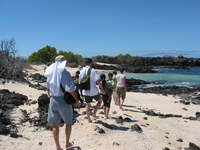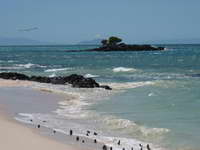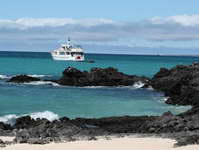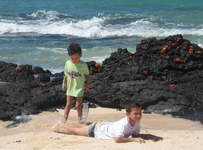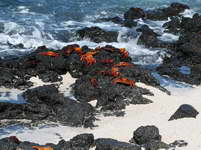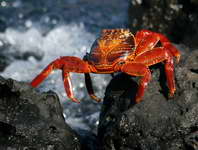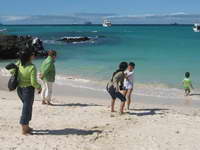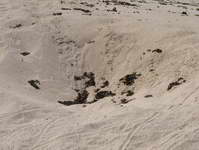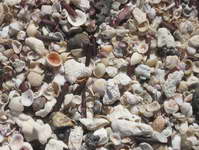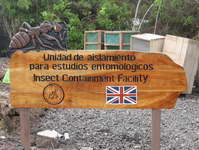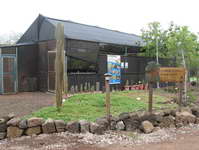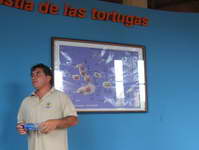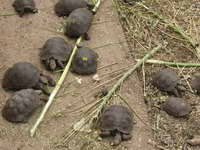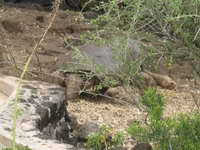The Galapagos Islands are a part of Ecuador. Ten islands are have little or no inhabitation. Five are inhabited including Baltra and Santa Cruz. We flew to the island of Baltra since that is where the airport is. From there we were bussed to a short ferry ride to Santa Cruz. Our hotel was on the other side this island, about 45 minutes away.
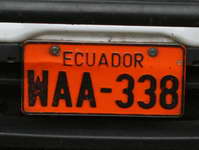
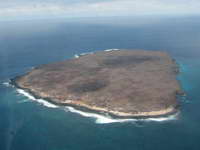

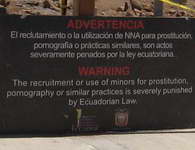
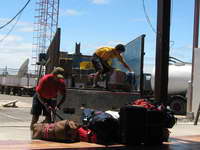
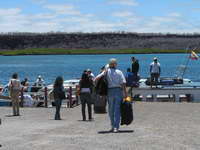
Close to our hotel was Santa Cruz's biggest city - Puerto Ayora. We didn't walk around Puerto Ayora until a couple days later, but pictures from that outing are included here for clarity of presentation.
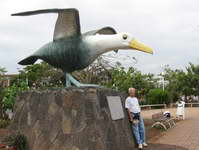
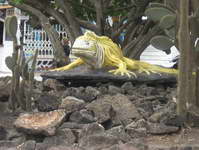

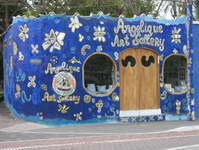

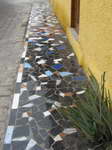
Our hotel was across the harbor and the only practical way to get to our hotel was via boat. The Finch Bay Eco Hotel supplied a shuttle boat which made the circuit about every 20 minutes. If we found that schedule incovenient, water taxis were available for $1/person. We never had the need to use one. On our boat ride across the harbor we met Stan and Marie, the only other Gate 1 Travel tourists on this trip! Our small number was never a problem as the hotel combined us with other people who wanted to go on tours. /p>
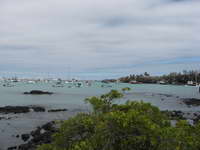
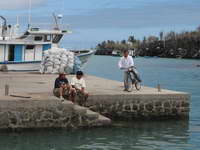
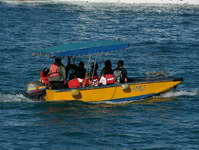


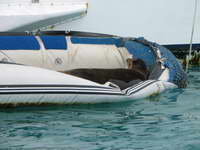
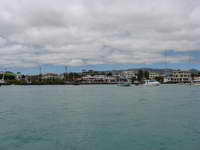
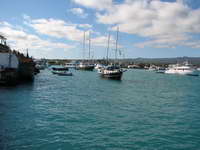
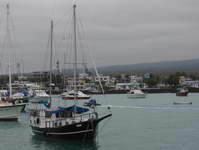
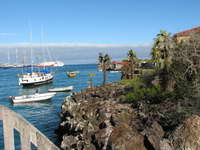
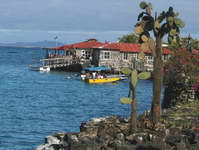
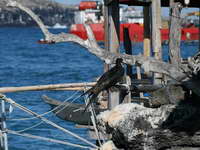
The hotel was more than of a 1/10 mile from the dock.
A hotel guide used a wheelbarrow to transport our luggage!
A golf cart would have been easier, but the Finch Bay Hotel went out of its way to be environmentally friendly.
In fact, while in the Galapagos we never met a person that was disrespectful of the environment.
As a result, the birds etc. had little fear of humans and would often let you approach within a few feet.
It was a nature photographer's paradise.
We did not see a TV while at the Finch Bay Eco Hotel - not in our room or the hotel lobby.
Even though the Red Sox were playing in the World Series, we still were happy for the lack of TV intrusion.
Dick checked the free internet service each morning to see how the Sox had done. They never lost!
The food at the hotel was amazing. Not only was there a gourmet chef, the food was artistically presented.

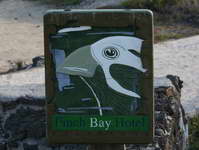
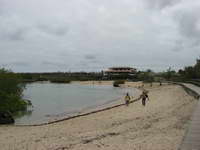
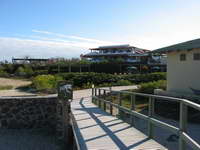

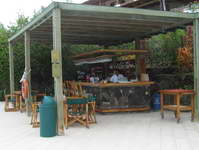
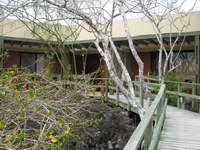
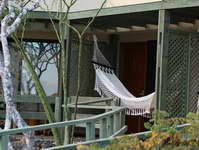
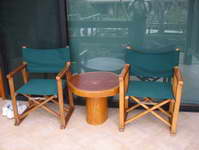

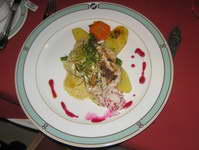

The hotel had a nice beach that was open to the public. The 70 degree water temperature did not attract many swimmers, until Sunday when the local families came. Per usual, youngsters were not deterred by cool water temperatures. There was a nice hotel pool too. We didn't use it because we didn't stay still very long, but the birds were thankful for the pool!

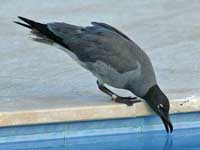

On our first full day in the Galapagos we boated to North Seymour Island where we experienced our most
exciting wildlife viewings of the trip.
The island had large numbers of blue-footed boobies and frigate birds.
And as was true for the smaller birds around the Finch Bay Hotel, these birds also did not feel threatened by humans.
In addition to birds, there were sea lions and an lots of iguanas.
This was an experience we will vividly remember until our minds go mushy.
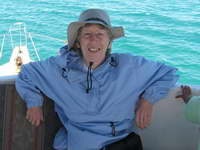
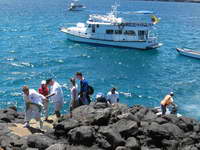
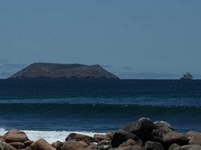
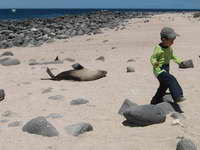
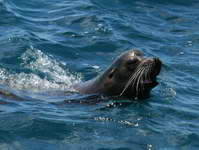


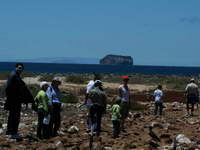

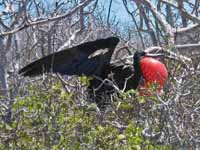
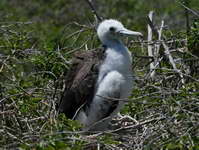

After North Seymour we had lunch on board and then proceeded to a remote beach on Santa Cruz island.
We saw a turtle swimming in close to shore, but none on shore. We had to settle for viewing turtle hollows where eggs had been laid.
The beach was beautiful, and had been portrayed as a good place to snorkel.
However, on this day the surf was up, causing the water to be too cloudy for snorkeling.
That did not bother us too much as the cool water temperatures were not enticing.
Note: the flamingo shown in the above group of photos was really viewed on this afternoon phase of the trip.
On our second day of guided tour we were taken first to see volcanic relics. The first was a sink hole which formed when a gases from a once active volcano colapsed. The second was a lava tube, similar to one we had previously seen in Hawaii.
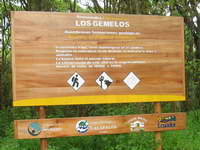
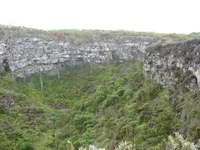
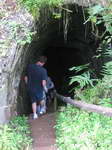


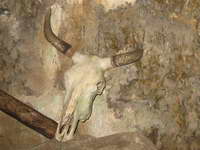
We continued on to an area where our guide guaranteed us we would see lots of tortoises. We drove perhaps a mile down a dirt road, occasionally seeing a tortoise close to the side of the road. We then came to a tourist shop that sold t-hirts etc. plus some snacks. This way the farmed was able to gain some income from the toroises that loved to frequent his fields. Because of governmental protection, the tortoises are not fenced. We saw an amazing amount of tortoises during a quarter of a mile walk.
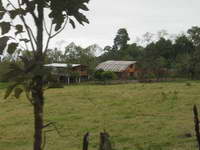
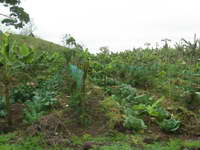

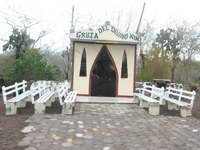

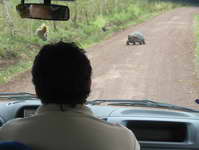
The morning of our last full day on Galapagos were went to the Charles Darwin Research Center that is close to Puerto Ayora. The charter of this private organization is to protect the environment of the Galapagos Islands and at the same time to help perpetuate the native species. One important facet of their efforts is to research what metheds can be used to control accidentally introduced insects or animals. Antoher is to breed tortoises for the various islands, as each had a differently evolved species. We saw numbered baby tortoises that were color coded for their native island where they would be returning.



